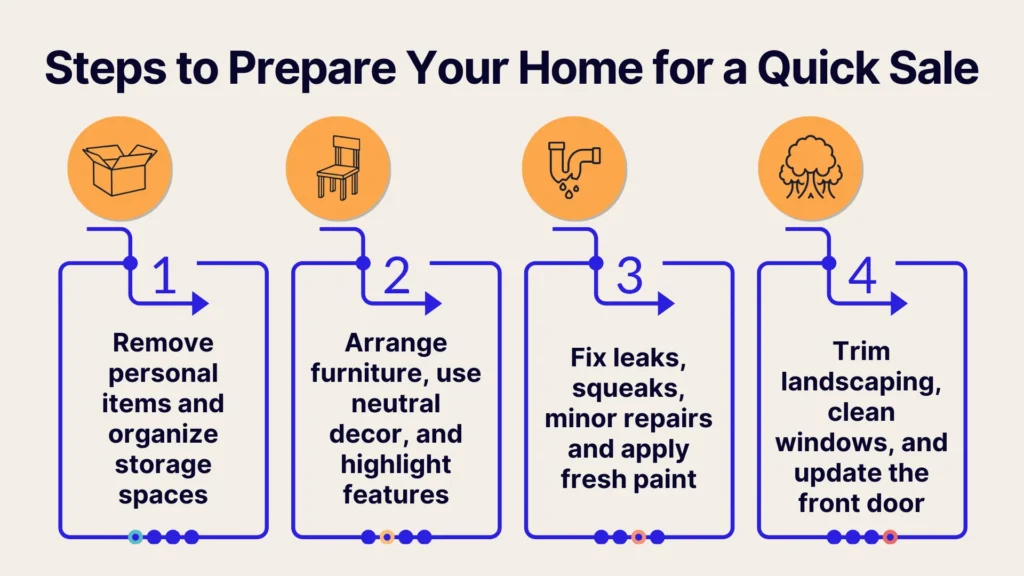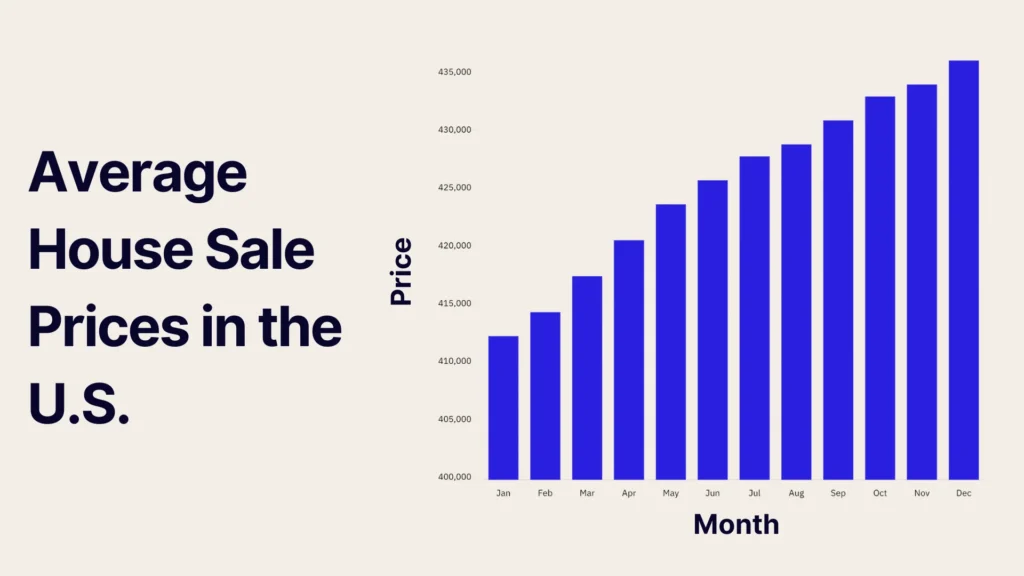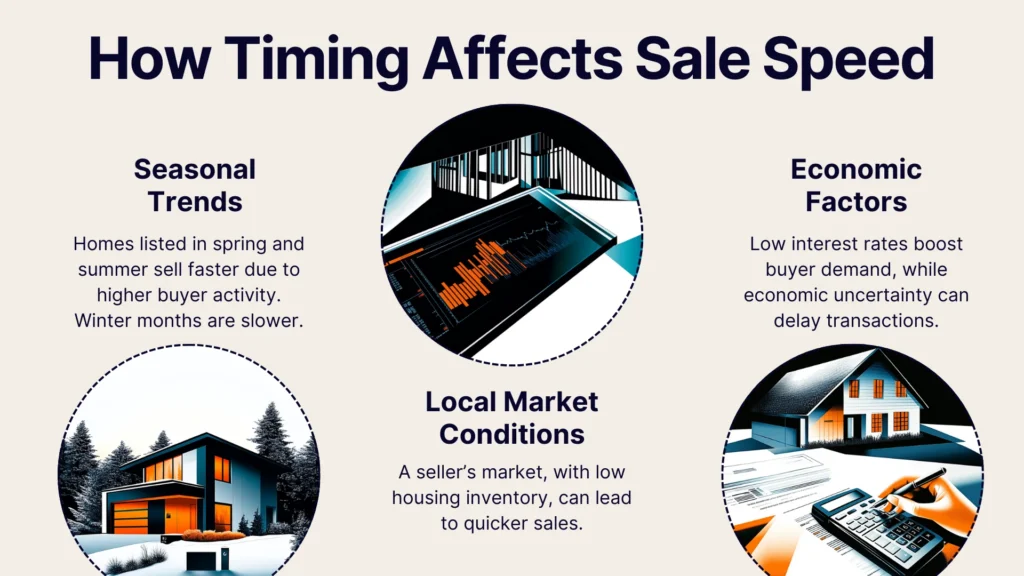Selling your home quickly can feel like a formidable task, but with the right strategies and preparation, you can expedite the process and attract potential buyers. From decluttering and staging to effective pricing and marketing techniques, every detail matters in making your property stand out in a competitive market. Understanding the timing of your sale and being prepared for common challenges can further enhance your chances of a swift sale.
In this guide, we’ll explore essential steps to prepare your home, pricing strategies, marketing impacts, and tips for overcoming obstacles to help you achieve a successful sale in no time.
How To Prepare Your Home For a Quick Sale
Selling your home quickly requires careful preparation to maximize your property's appeal. The more appealing your home is to look at, the easier it will be to find prospective buyers. Here are some things you can do to prepare your property for potential buyers.

Decluttering and cleaning
The first step in preparing your home is decluttering and cleaning. A clean, tidy space allows potential buyers to envision themselves living there. Remove unnecessary items from countertops, tables, and shelves. This creates a sense of space and order.
Take down family photos, personal memorabilia, and anything that could distract buyers from seeing the home itself. Buyers will often look in closets and storage spaces. Keep these areas neat and organized to showcase your home's storage potential. A decluttered home not only looks more inviting but also feels larger, enhancing its overall appeal.
Home staging
Home staging is crucial for showcasing your property’s best features. Staging transforms your home into a blank canvas where buyers can envision their future.
Arrange furniture to create a natural flow through the space. Place chairs, tables, and other pieces in a way that makes rooms feel open and inviting. Use neutral colors for walls and furnishings to appeal to a broader audience. This allows buyers to imagine their style in the space.
If your home has unique architectural details or beautiful views, make sure these are highlighted in your staging. You can also incorporate fresh flowers or plants to bring some more life into the space. These small details can make a big difference in creating an inviting atmosphere.
Minor repairs and improvements
Addressing minor repairs can significantly impact how quickly your home sells. Investing time in minor repairs shows buyers that the property has been well-maintained, making them more likely to move forward with an offer.
Prioritize repairing leaky faucets, cracks in drywall, squeaking doors, or any other minor issues that might suggest neglect. Any broken windows, termite damage, or water damage should also be addressed before listing your home on the market.
If everything in your home is in working order, making small improvements to your home can make it feel like new. A fresh coat of paint can revitalize a room. Focus on painting high-impact areas like the kitchen and bathrooms. Consider updating outdated light fixtures or cabinet hardware. These small changes can modernize the look of your home without significant investment.
Enhancing curb appeal
Curb appeal is the impression people get when seeing your home for the first time. Enhancing curb appeal can make buyers more likely to fall in love with your home once they’re able to see what’s inside.
Landscaping is the most straightforward way to increase curb appeal. Trim bushes, mow the lawn, and plant colorful flowers. A well-maintained yard invites buyers in with the appearance of a well-kept home. If you have garden ornaments, make sure that they’re placed intentionally to highlight the strong points of your yard.
A fresh coat of paint on your front door can create a welcoming entrance. If you have the budget, consider adding new hardware for an updated look. Cleaning the windows also enhances curb appeal, with the bonus effect of propagating more natural light inside the home.
What Pricing Strategies Help Sell a Home Quickly?
To sell your home quickly, you will need to offer a good price relative to similar homes in your area. Buyers will see the asking price and use that to determine whether your home is worth a second look. Here are some effective pricing strategies that can help you achieve this goal.
Competitive pricing
Competitive pricing means setting a price that aligns with similar properties in your area while considering the unique features of your home. Look at recent sales of similar homes in your neighborhood to gauge appropriate pricing. If your home has special amenities (like a pool or updated kitchen), factor these into your pricing strategy to justify a higher price point.
Market analysis
Conducting a thorough market analysis helps you understand current trends affecting home prices. Do your research regarding fluctuations in the local real estate market, including inventory levels and buyer demand. Recognize seasonal trends that may affect buyer behavior. Spring often sees increased home-buying activity compared to winter months.

Price adjustments
Be prepared to adjust your pricing strategy based on market feedback. If showings are low or feedback is consistently negative regarding price, consider lowering it strategically. Create urgency by offering incentives for quick sales, such as covering closing costs if sold within a specific timeframe.
How does marketing impact the speed of a home sale?
Effective marketing is the ingredient that makes the difference between getting your home sold fast and having it sit on the market for months on end. Let’s tackle the various marketing strategies that can enhance visibility and attract buyers:
Online listings
In today’s digital age, online listings are essential for reaching potential buyers. A strong online presence significantly increases visibility among interested parties actively searching for properties like yours.
List your property on popular real estate websites as well as social media platforms for maximum exposure. Write compelling descriptions highlighting key features of the home while using relevant keywords to improve searchability.
Professional photography
High-quality images of your home are important to present your home in the best light. Invest in professional photography services to capture your home's best angles and lighting conditions effectively. Include images that depict lifestyle elements to help buyers envision living there, such as outdoor spaces set up for entertaining.
Open houses and virtual tours
Hosting open houses and offering virtual tours can further enhance interest in your property. Strategically schedule open houses around times when potential buyers are most likely available (e.g., weekends) to maximize attendance.
Offer 360-degree virtual tours online so interested buyers can explore the property from the comfort of their homes before scheduling an in-person visit. These strategies provide potential buyers with multiple ways to experience your property, increasing engagement and interest levels.
Social media promotion
Social media platforms are powerful tools for marketing real estate listings. Share posts about unique features of your home, neighborhood highlights, or behind-the-scenes looks at preparations for sale. Make sure to use platforms like Facebook Marketplace or Craigslist that are specifically made for advertising things for sale.
Consider targeted ads on platforms like Facebook or Instagram that reach specific demographics likely interested in buying homes in your area. Social media marketing expands reach beyond traditional methods, connecting you with potential buyers directly where they spend their time online.
How Can Timing Affect The Speed of Selling?
Most people believe that the timing has to be right when you’re selling your home. The time of year, the state of the local housing market, and the economy can all influence the speed with which you sell your house. Let’s examine these timing factors.

Seasonal trends
The time of year can significantly impact buyer activity. Spring typically sees higher buyer activity due to favorable weather conditions and families wanting to move before school starts again in the fall. Conversely, winter often brings decreased buyer activity as many people delay moving during holidays or harsh weather conditions. Generally, houses listed in the spring and summer months sell faster than those listed during winter and fall.
Local market conditions
The state of the local housing market can also affect selling speed. If homes in your area are taking a while to sell, this could indicate low demand for houses. If there are fewer homes available than buyers looking for them, this creates competition among buyers, potentially leading to quicker sales at higher prices.
Economic factors
Broader economic conditions also impact buyer confidence. Rising interest rates may deter some potential buyers from entering the market due to higher borrowing costs; conversely, lower rates may encourage more activity. Homes located in regions experiencing job growth often sell faster due to increased demand from relocating workers seeking housing options nearby.
Understanding how economic factors influence buyer behavior allows sellers like yourself better insight into timing decisions regarding listing properties effectively.
Common Challenges in Selling Your Home Quickly
Even with preparation efforts underway, challenges may arise during the selling process. You might have to deal with lowball offers, inspections, or problems with a buyer’s financing options.
Low offers
Receiving low offers can be disheartening but is not uncommon. Take time to evaluate the terms presented alongside the price offered. Sometimes there can be some flexibility in negotiations. Being open-minded during negotiations can lead to a mutually beneficial outcome, despite initially low bids.
Financing issues
Financing complications can arise during transactions and cause an unforeseen delay. This usually stems from the buyer’s side, so make sure that your prospective buyer has their insurance binder, proof of income, loan pre-approval, and other documents that prove that they have the financial capacity to buy your home.
Inspection problems
Home inspections may reveal unexpected issues that can impact sales timelines if left unaddressed. Scheduling a home inspection before you put your house on the market can help you identify and sort out any issues before a buyer has the chance to notice them.
Tips for Tackling Home Sale Challenges
Dealing with challenges you encounter during the sales process means employing proactive strategies. Here are some tips designed specifically aimed at overcoming obstacles that are preventing you from selling your home quickly.
Flexibility in negotiations
Being flexible during negotiations can prove to be more beneficial than outright rejecting offers. Consider counter-offering instead of rejecting an offer. This opens doors towards finding common ground with the buyer, which could ultimately lead to a satisfying agreement between both parties.
Pre-approval of buyers
Ensuring prospective purchasers possess pre-approved financing reduces the likelihood of encountering financing issues later on. Verify that any potential buyers have a pre-approved loan before seriously considering their offer.
Addressing inspection issues
If a buyer schedules an inspection and finds an issue you overlooked, be willing to address it ASAP. Addressing a potential issue with speed and grace can convince buyers that you’ve got the right mindset when it comes to selling your house.

Conclusion
Achieving a quick home sale means mastering key elements like staging, marketing, and timing. It’s a complex process, but with the right tools, it doesn’t have to be overwhelming. Propbox makes it easier by providing AI-powered pricing tools, real-time updates, and a seamless platform to help you market your home and attract buyers faster.
Don’t leave your quick sale to chance – use Propbox to streamline the process and achieve your timeline.
